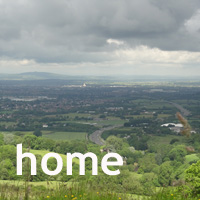Banking for Victory!
 Saturday, September 26, 2015 at 12:33PM
Saturday, September 26, 2015 at 12:33PM
The main reason for earmarking this for a day out was Upton House. I’d read how the house and gardens had been used for a special exhibition to do with WW2 and taken a look at the website. I decided this was something I’d rather like to see.
First impressions were interesting!
Entering the ticket office and showing our National Trust cards, we smiled and commented to the staff member how clever this was, noting the wartime music playing in the background. “Hmm”, said he, “it was fun when it began in March, but we are getting a little used to it now”. I knew what he meant. Sometimes, these themes get a bit out of hand.
With timed ticket and the map/guide in hand, we set off to the house. Our entry wasn’t for almost an hour, so we hoped we’d find something of interest.
Get the picture?
Our first stop was in a cinema tent, where we sat and watched a little of the background to the story. I knew nothing of that, but soon learned that Lord Bearsted and his family owned Upton House, that amongst other things, he was the chairman of Samuel’s Bank in the City and that during the war, he evacuated the bank and all the staff to Upton, so they could continue their work in more peaceful surroundings.
The family had been serious art collectors and part of the story concerned the artworks. The family (trust?) continue to support the arts and there was an exhibition in the old Squash Courts to view. I’m not sure it quite worked for us, but I’ll find out a little more and maybe I’ll get a clearer understanding of the artist and her work.
On such a beautiful afternoon, it was great to have time to stroll around the grounds and explore one or two hidden corners.
The views of the surrounding area are stunning and we were drawn to walk towards the haha, initially to look back at the house.
But we were amused/rewarded by the hidden parts of the garden too!
The gardeners have had fun here as well, recreating the “dig for victory” planting, with tomatoes and rhubarb in the borders where flowers would have been.
Closer to the house were borders of peas and beans, and a few places where the harvest had already happened.
Time to go in, then, for an introductory talk in the kitchen and a short film setting the scene.
Being easily distracted, I couldn’t help but read all the notices on the walls – feeling surprised by the tone of this morale-boosting poster and wondering how it would be received today.
My hero pointed out the phrase “Bones make glue for aeroplanes” and remarked how far we’ve come. I wondered at what point we stopped referring to “salvage”.
There was so much detail. Someone had such fun putting it all together, I could tell!
I couldn’t help but admire the style in which information was shown. The cloths hanging as backdrops for small arrangements, all so well thought through. The staff member who delivered the introduction explained that we were welcome to explore the house on our own and that we should feel free to open drawers, to have a poke around and to discover as much as we could on our visit. Interesting!
We went into the first room, then; the sitting room, where the bank staff had set up their office.
Here, it became clear what we had been told. We could sit and have a go on the old typewriters (we did!) we could take a look around and imagine (remember?) how offices used to be.
Before computers and email, when paperwork was colour coded “on buff” (or peach…) and items were pigeonholed.
When there was no such thing as “secure data” and nothing was shredded.
When people smoked in their office and desks had ashtrays. (yuk)
And when ladies like Miss Hazelrigg ruled their domain with a steely presence. (“Miss Hazelrigg was a secretary – a cut above – not a run of the mill typist. She had blonde hair and was beautiful. She was very smart and imposing”)
Yes, of course I opened the drawers!
Oh, how times have changed.
Next door, there was a staff common room, with a comfy sofa and chairs where staff would have gathered to listen to the radio wireless of an evening, read and play board games.
We’d been told about the effect of all of this on the staff, many of whom had left their family in London, amidst the bombing and the hardship. Here they were, living in comparative splendour in a kind of “holiday camp” atmosphere and for some, it was somewhat of a challenge.
But life still involved a few hardships and similar challenges of wartime to everyone else.
The blackout, rationing and so on still applied.
The ARP warden’s station was at the top of the stairs.
But I’ll bet there were few so lucky as to have a lunchbox filled with such treats.
Whilst here, the staff slept in dormitories and our next stop was in one of the women’s bedrooms where a small sewing machine and a few other bits told the “make do and mend” story.
A pinboard of ephemera would have kept me happy for an hour or two!
Miss Hazelrigg’s bedside table had her clothing coupons and powder compact there to hand.
Around the corner in the bathroom was possibly the single “information overloaded” area in the whole place.
The men had their own dormitories, including a room across the corridor here.
And whilst their bedtime habits appeared to be a little different from the ladies across the way,
their pinboard included some similar cuttings!
Having learned about the banking staff and how they had been accommodated in the house, we moved to the next part of the story; how Lord and Lady Bearsted had played key roles in the war. As a prominent Jewish family, they had been generous not only to their staff, but to causes dear to their heart. He had been involved in the setting up of the Kindertransport and she had worked tirelessly for the WRVS and the YMCA. Good people, both, doing their best for others. Sad, then, to learn that they never really returned to live full time at Upton House after the war, that Lord Bearsted died in 1948 and his wife a few months later.
The third and final thread to the story was told in the basement. The tale of the artworks.
We’d been told that the family were great art collectors and that they owned many works of international significance. We’d seen labels like this hanging from some of the pictures, though I’ll admit to not paying much attention to the paintings and the china collections around the house, finding too much else to capture my attention!
However, when treasures from the National Gallery were moved to a slate quarry in North Wales for safe keeping, Lord Bearsted was able to include 40 of his own paintings to be safely stowed away for the duration of the war. Here, we learned the story of how they were packaged and transported and together with the house and wider collection, were all given to the nation on his death.
Finally, I was glad to learn a little about the whole concept of the transformation of the house and the story behind the exhibition. We’d so admired the consistency, the overall design and the vision of whoever was responsible (and clearly, were not alone in our admiration, either)
As we left, you’ll guess which page we squeezed our red dots onto.
The exhibition continues into next year and I’m sure “we’ll meet again”, probably not for the Wartime Christmas, but to take another look at all the details we surely missed. In the meantime, I hope the National Trust follow on from this success with similar innovative projects. If they do, we’ll be there!








Reader Comments (3)
What a fantastic, creative exhibition!
Both Compton Verney and Upton House are regular haunts, but we have not been to Upton this year yet. I love the gardens there. So pleased you enjoyed them.
The N T do look as if they are doing a bit more to attract the public. I must try to find if there is a body like it here in France that might have a few local delicacies.